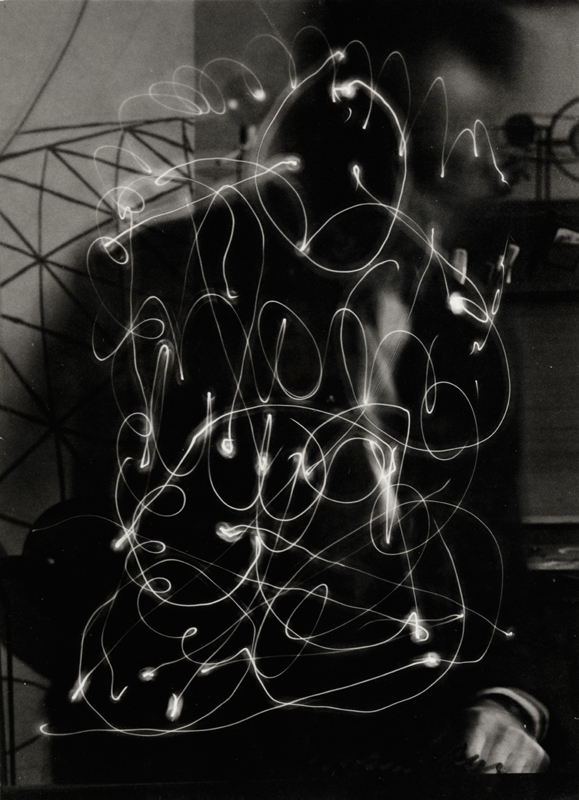by Jesse Ortiz ’16.
Initially, Man Ray’s Space Writing (Self-Portrait) confused me. But as I continued examining the photograph, the layers unraveled—the squiggled “writing” exists in a plane on top of a blurred background. Right away, I saw the hand in the lower right corner. This hand led me to realize that the blurred background image is actually the portrait of a man. There was a period of time when I saw the hand, but not the rest of him, and yet it was the hand that made me see the photograph as a portrait. The hand in Man Ray’s photograph is a clenched fist, conveying a kind of strength or solidity. This hand resides in the corner that would typically contain the artist’s signature. In fact, Man Ray’s signature exists in the light writing itself, but is only legible if the image is held up to a mirror. This, along with the distortion of the subject (Man Ray himself), subverts our ideas about authorship. The small size of the print was also intriguing. With these techniques, Man Ray forces his audience to focus in close on the image and think more deeply about the role of the artist in its production.
I think of the “space writing” as a reduction or distillation of Man Ray’s portrait to mere light or energy – and yet this writing doesn’t completely obscure the background image or convey a readily available message. The abstracted space writing exists on a plane closest to the audience, pushing this image forward, while the physical body of Man Ray falls into the background. This speaks to his role as an artist and the way his artwork becomes a distillation of his selfhood, leaving behind a legacy or image for the public. This image, however, cannot fully or accurately represent his fading self.
